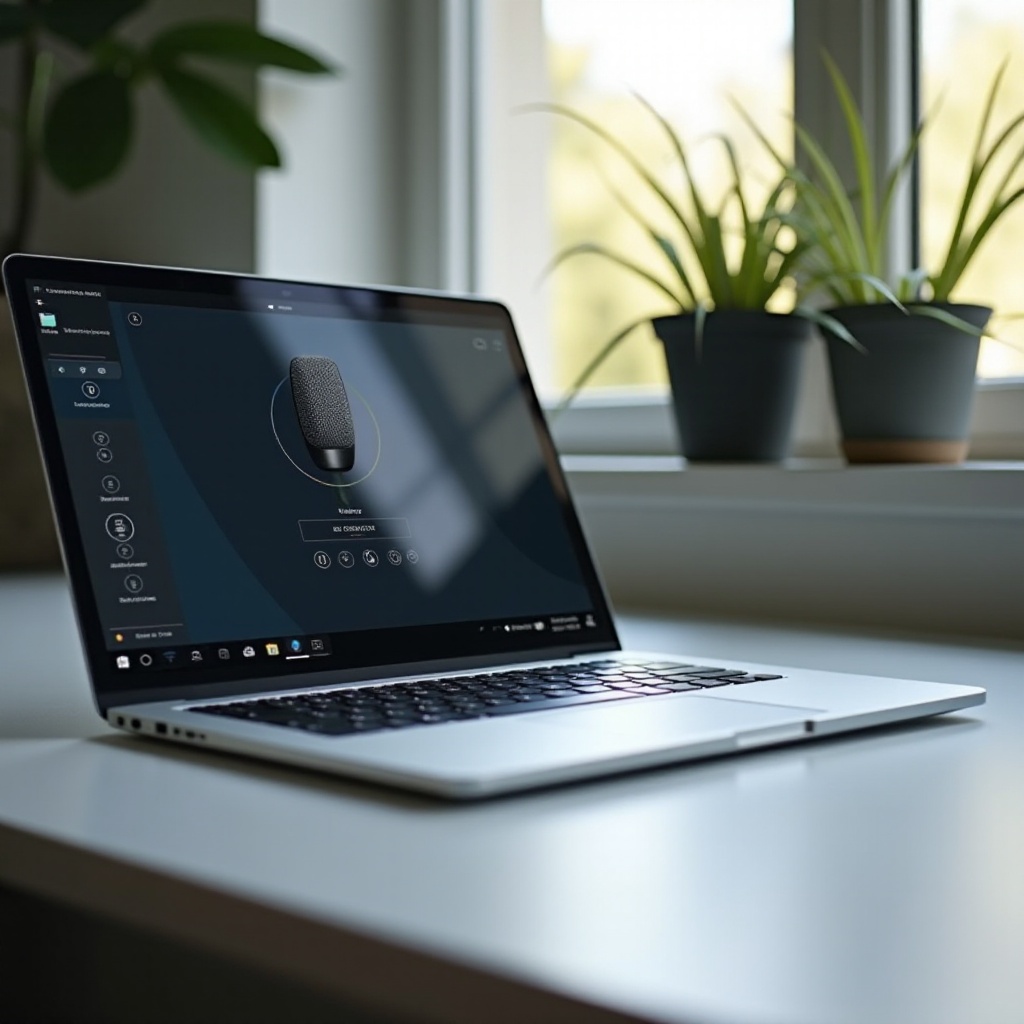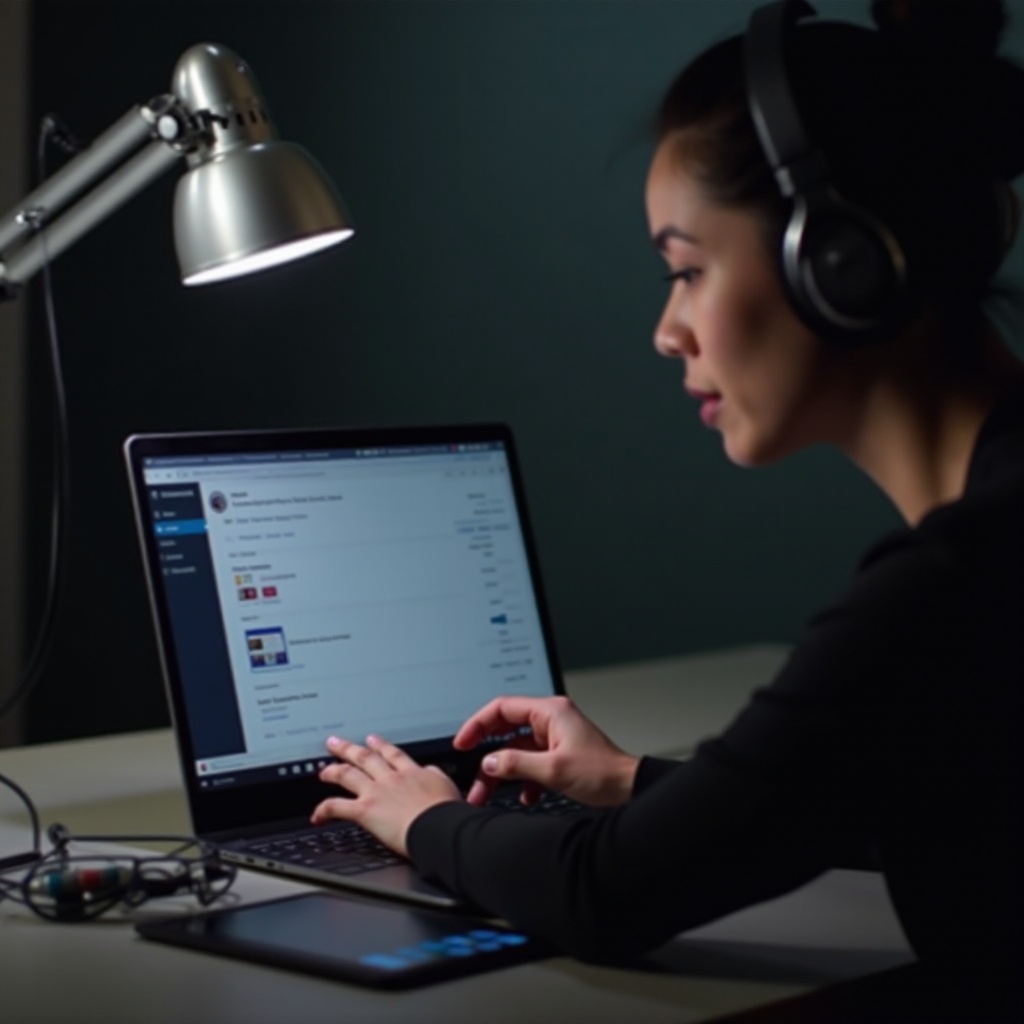Introduction
The Chromebook, known for its affordability and lightweight operating system, has gained popularity among students and casual users. But does this practical device offer audio recording capabilities? If you’re looking to record lectures, podcasts, or voice memos, understanding what your Chromebook can do is essential. This article delves into everything you need to know about recording audio on a Chromebook, from available apps to practical tips and troubleshooting common issues.

Understanding Chromebook’s Audio Recording Capabilities
Chromebooks run on Chrome OS, which is different from the more familiar Windows or macOS. While this might seem like a limitation at first glance, Chrome OS still provides ample functionality for basic tasks, including audio recording. Chromebooks are equipped with basic built-in microphones, making it possible to record audio without needing any additional peripherals.
However, the quality and ease of this feature depend greatly on the software you use. Chrome OS has access to the Google Play Store and offers various web-based applications, granting users multiple options when choosing an audio recording program. The main consideration is identifying which apps offer the best performance and which scenarios they are best suited for.

Best Apps for Recording Audio on a Chromebook
To get the best experience while recording audio on your Chromebook, selecting the right app is crucial. Here are some highly recommended apps:
-
Voice Recorder: This simple yet powerful app is perfect for basic audio recordings. It offers straightforward functionality with a user-friendly interface. Ideal for quick voice memos and simple audio tasks.
-
Audacity: A highly versatile and powerful tool, Audacity can be used for more detailed audio work, such as podcasts or music production. However, running Audacity may require using Linux mode on your Chromebook.
-
Beautiful Audio Editor: This web-based app provides more features than the average recorder, including multi-track editing and effects. It’s great for users looking to do more than just record raw audio.
-
Audio Cutter: Though primarily used for audio trimming and editing, Audio Cutter also includes basic recording capabilities. It’s best suited for those who need quick and easy editing on their recordings.
-
TwistedWave Online: This is another feature-rich web application that supports multi-track editing and a variety of effects. It’s particularly useful for users who need a reliable online solution.
By choosing the right app for your needs, you can make the most of your Chromebook’s audio recording capability.
Step-by-Step Guide to Recording Audio on a Chromebook
Recording audio on a Chromebook is straightforward. Here’s how to do it using the Voice Recorder app as an example:
- Install the App: Search for Voice Recorder on the Google Play Store and install it on your Chromebook.
- Open the App: Once installed, find the app in your launcher and open it.
- Set Up Your Microphone: Ensure your Chromebook’s built-in microphone is working or connect an external microphone if desired.
- Start Recording: Press the record button to start capturing audio. Speak clearly into the microphone to ensure good quality.
- Stop Recording: When done, press the stop button. The recording will automatically save to your specified location.
- Playback and Edit: Listen to your recording and edit if needed. Most apps offer basic trimming functionality.
- Save Your File: Rename and save your file to a chosen directory. You can also upload it to cloud storage for safekeeping.
Understanding these steps ensures that you can efficiently use your Chromebook for various audio recording needs, from taking simple notes to creating detailed recordings.
Tips for Improving Audio Quality
To obtain the best possible audio recordings on your Chromebook, consider these tips:
- Use an External Microphone: External microphones significantly enhance audio quality compared to the built-in ones.
- Find a Quiet Space: Minimize background noise by recording in a quiet environment.
- Proper Microphone Placement: Ensure the microphone is positioned correctly to capture clear audio.
- Check Settings: Adjust the audio settings within the app or system settings for better sound capture.
These simple adjustments can greatly improve the quality of your recordings, making them clearer and more professional sounding.

Troubleshooting Common Issues
Even the best setups can encounter problems. Here are some common issues and how to resolve them:
- No Sound: Ensure your microphone isn’t muted and that it’s properly connected. Check the app permissions in Chrome OS settings.
- Poor Audio Quality: Verify that you’re in a quiet space and using a good-quality external microphone.
- App Crashes: Update the app to the latest version or try reinstalling it. Also, check for any Chrome OS updates.
By addressing these common issues, you can maintain a smooth and reliable recording experience.
Conclusion
Chromebooks are versatile tools that can handle more than just web browsing. With the right apps and a bit of knowledge, recording high-quality audio is entirely feasible on these devices. From understanding the best applications to troubleshooting common problems, this guide should help you make the most out of your Chromebook’s audio recording capabilities.
Frequently Asked Questions
Can I use an external microphone with my Chromebook?
Yes, you can use an external microphone with your Chromebook to improve audio quality. Most USB and Bluetooth microphones are compatible, just plug them in, and the device should automatically detect the new hardware.
Which audio recording app is best for Chromebooks?
Choosing the best app depends on your needs. Voice Recorder is great for simple tasks. For more complex audio editing and production, apps like Audacity (with Linux mode) or online solutions like TwistedWave are recommended.
Why is my Chromebook not recording audio properly?
If your Chromebook is not recording audio properly, check the following:
– Ensure permissions for the microphone are enabled.
– Check the microphone connection if you’re using an external one.
– Use a different app to see if the issue persists, as it might be app-specific.
– Update your Chrome OS to the latest version.
